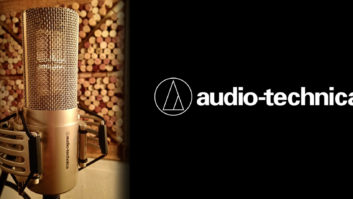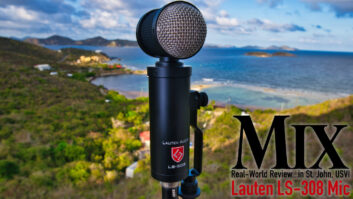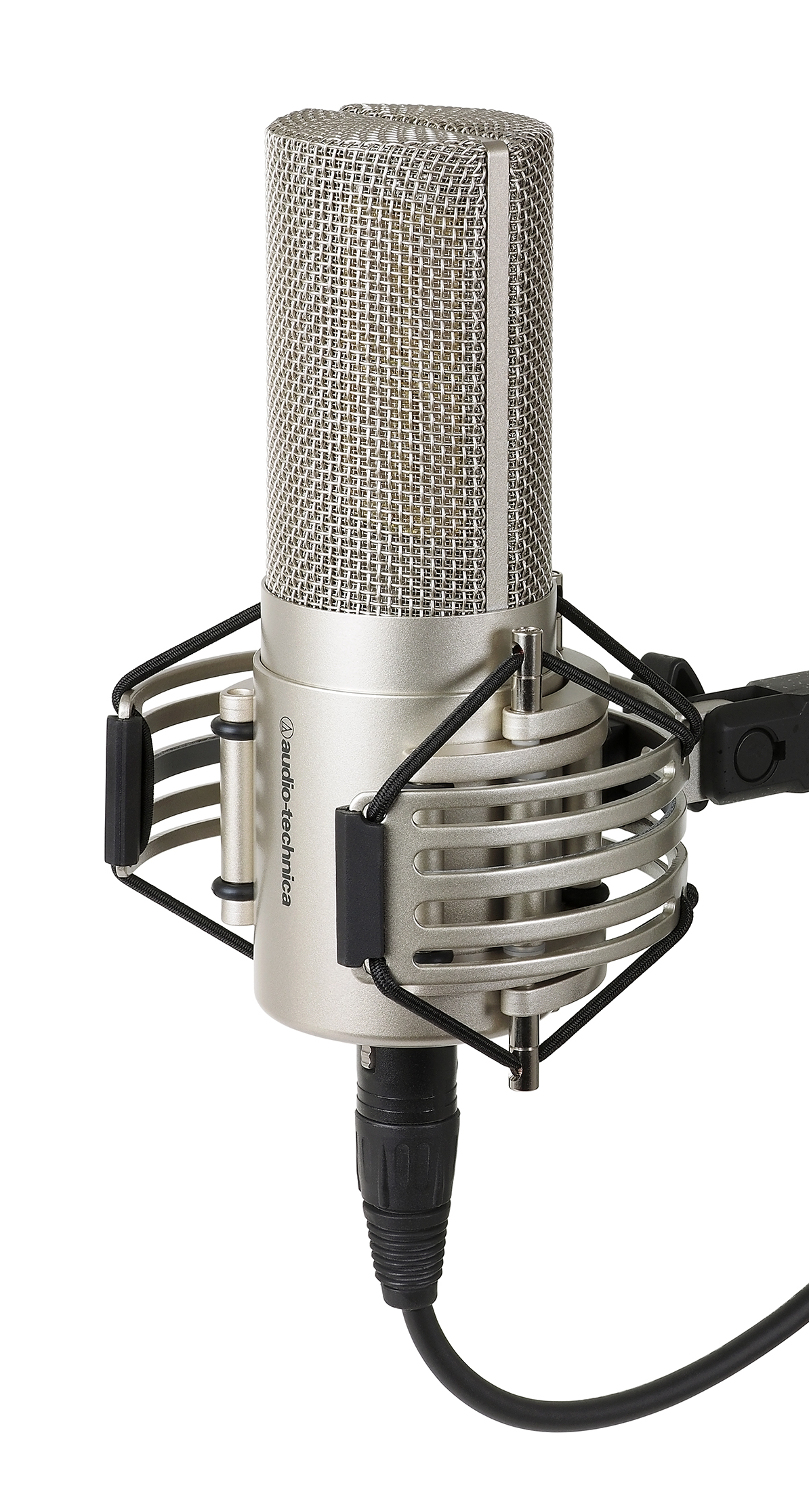
Audio-Technica’s AT5047 is the newest member of the company’s 50 Series of premium, handmade condenser microphones. Sharing a design similar to that of the AT5040, the AT5047’s capsule features four rectangular diaphragms, this time delivering their output via transformer-coupled circuitry. (The AT5040 employed transformerless electronics.)
While the AT5040 was designed primarily as a vocal microphone possessing the utmost sonic purity, the AT5047’s output transformer imparts a bit of color while enabling the microphone to be less dependent on the preamp for its performance. Compared with the AT5040, the AT5047 has a higher output impedance (150 ohms as opposed to 50 ohms) and is a bit less sensitive, allowing it to play well with a wider range of mic preamps. Maximum SPL is stated as 148 dB, versus 142 dB for the AT5040.
Basic condenser microphone engineering dictates that smaller diaphragms tend to have a faster transient response but produce a lower output level, often resulting in a higher self-noise floor. The AT5047’s four diaphragms function as a single, large membrane, but because each is smaller than a single membrane of the same surface area, they react faster to transients. Electronically summing the output of the diaphragms enables the AT5047 to maintain the quick transient response of a small-diaphragm capsule while achieving the low self-noise (6 dB) of a large-diaphragm.
Related: Leading Engineers/Producers Use Audio-Technica AT5047 Studio Microphone for a Wide Variety of Projects, Mix, Jan. 16, 2018
The AT5047 ships in a sturdy, foam-lined plastic case with a cutout for the shock mount. Like its 50 Series brethren, the AT5047 exudes elegance. The finish is beautiful, the AT8480 shock mount is a work of art (a refreshing change from the junk packaged with some rather expensive microphones), and the absence of screws makes you wonder how the heck the thing was assembled. A large head basket protects the side-address capsule, which is internally shock-mounted, and the overall feel of the mic inspires confidence. The AT5047’s pickup pattern is fixed-cardioid.
I was able to compare the AT5047 with recordings made using the AT5040 on the same male singer. No doubt the 5047 is a different animal, with more mojo in the low-mids and a very subtle increase of presence in the highs. The AT5047’s low-mid presence, however, does not scream “proximity effect.” Like the AT5040, the AT5047 is capable of creating a very intimate vocal sound. Get in close, and it can sound like someone is singing into your ear.
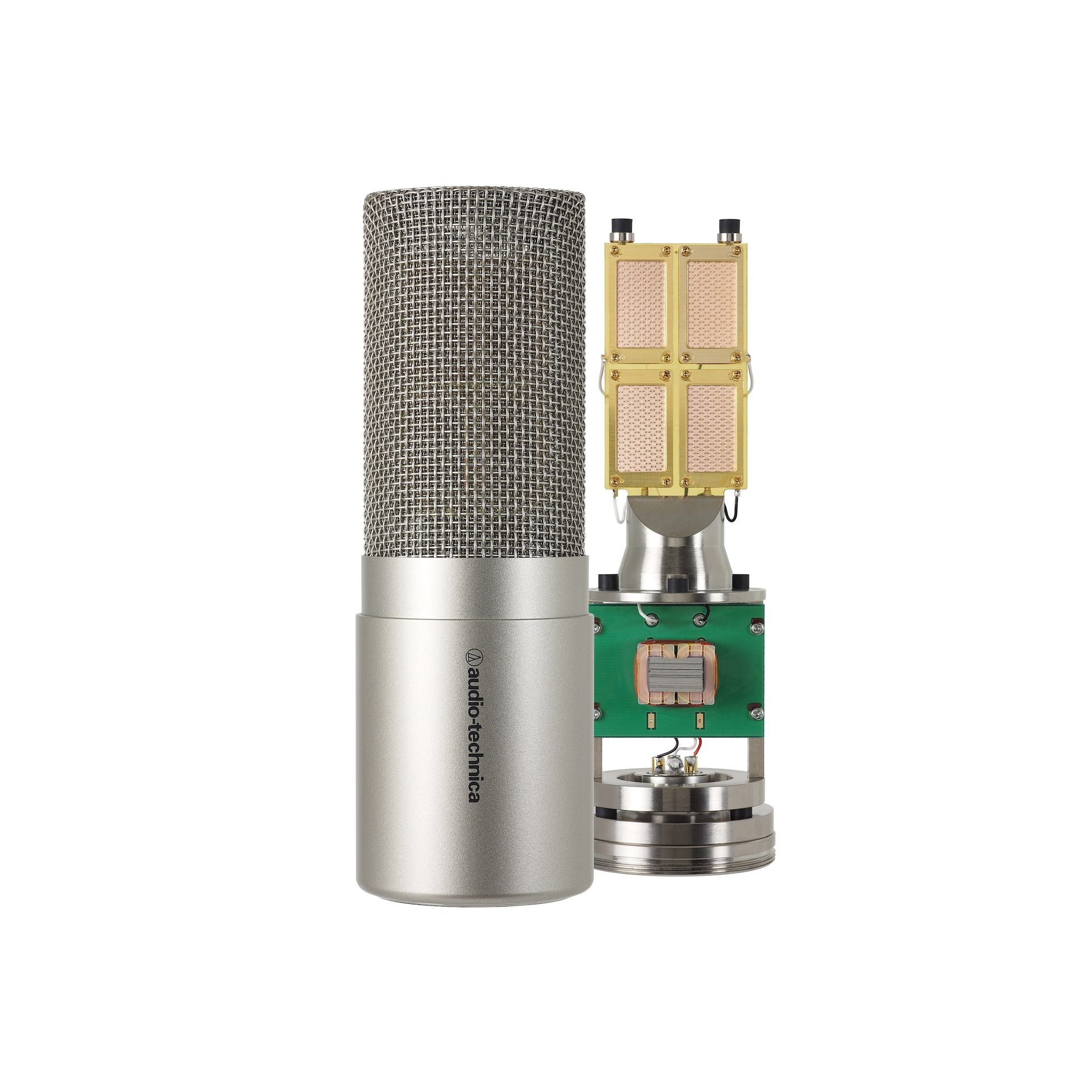
Used with a Great River MP-2NV preamp and a DeMaria Labs ADL1000 for a bit of compression, the AT5047 didn’t get shrill when the singer opened up, as has happened when we’ve tried other microphones. Changing the impedance switch on the MP-2NV from 1,200Ω to 300Ω resulted in a slight increase in the top end, making the voice sound a tad more “hi-fi.” There was also a slight increase in gain.
I had the chance to record powerhouse female vocalist Ann Marie Nacchio, who’s been known to break glass (figuratively) and blow out microphone diaphragms (literally). Patched through a Focusrite ISA110 and the ADL1000, the AT5047 easily handled Ann Marie’s dynamic range, capturing all of the nuances of the parts she sang softly while standing up to the loud sections—though, at times, I may have heard a bit of transformer saturation. The same low-mid character that I noticed on male voice was also evident in Ann Marie’s voice.
Moving the microphone off-axis, I noticed that the high-frequency response drops off rather quickly (about ±30 degrees), reducing the sense of “airiness, so its pattern is tighter than that of your average large-diaphragm condenser. All of the vocal recordings I made using the AT5047 shared that same sense of intimacy, and I found that if I moved the singer within about six inches of the microphone, the room all but disappeared. Up that close, proximity effect is audible but subtle. At times it sounded as if I were recording in a dead room, and though I did not get the opportunity, this characteristic would no doubt make the AT5047 an excellent tool for voiceover work.
Related: Audio-Technica Publishes New Video Tracing the Making of Its Flagship AT5047 Cardioid Condenser Microphone, Mix, Nov. 28, 2017
Placing the AT5047 as a mono overhead for drums, then through a Grace 201, my first impression was a bit surprising: The sound reminded me of a high-quality ribbon microphone. This may have been due to the off-axis response to the crash cymbals, which were roughly ±45 degrees. The plastic tip of a drumstick on a ride cymbal was clearly defined, yet the cymbals didn’t sound bright or harsh like they might on a lesser condenser mic.
Nor did the it have the sizzle or “mid-scoop” sound sometimes heard from condensers. The AT5047 captured plenty of low end from the kick drum, and toms had such impact that they practically sounded like they were close-miked. Adding a bit of 12k EQ on a Pultec plug-in yielded glorious results, and, perhaps most important, the kit sounded balanced. Of course, it didn’t hurt that I was recording a very good drummer!
Moving the AT5047 away from the kit and further into the room delivered excellent results. The bottom end of the kick drum was huge, and a touch of compression provided plenty of punch (apologies for the cliché). I briefly tried the AT5047 as a close mic for kick, which created a retro, sort of mid-rangey, mid-’70s R&B vibe. While the mic easily handled the SPL from the kick, the timbre wasn’t particularly my cup of tea.
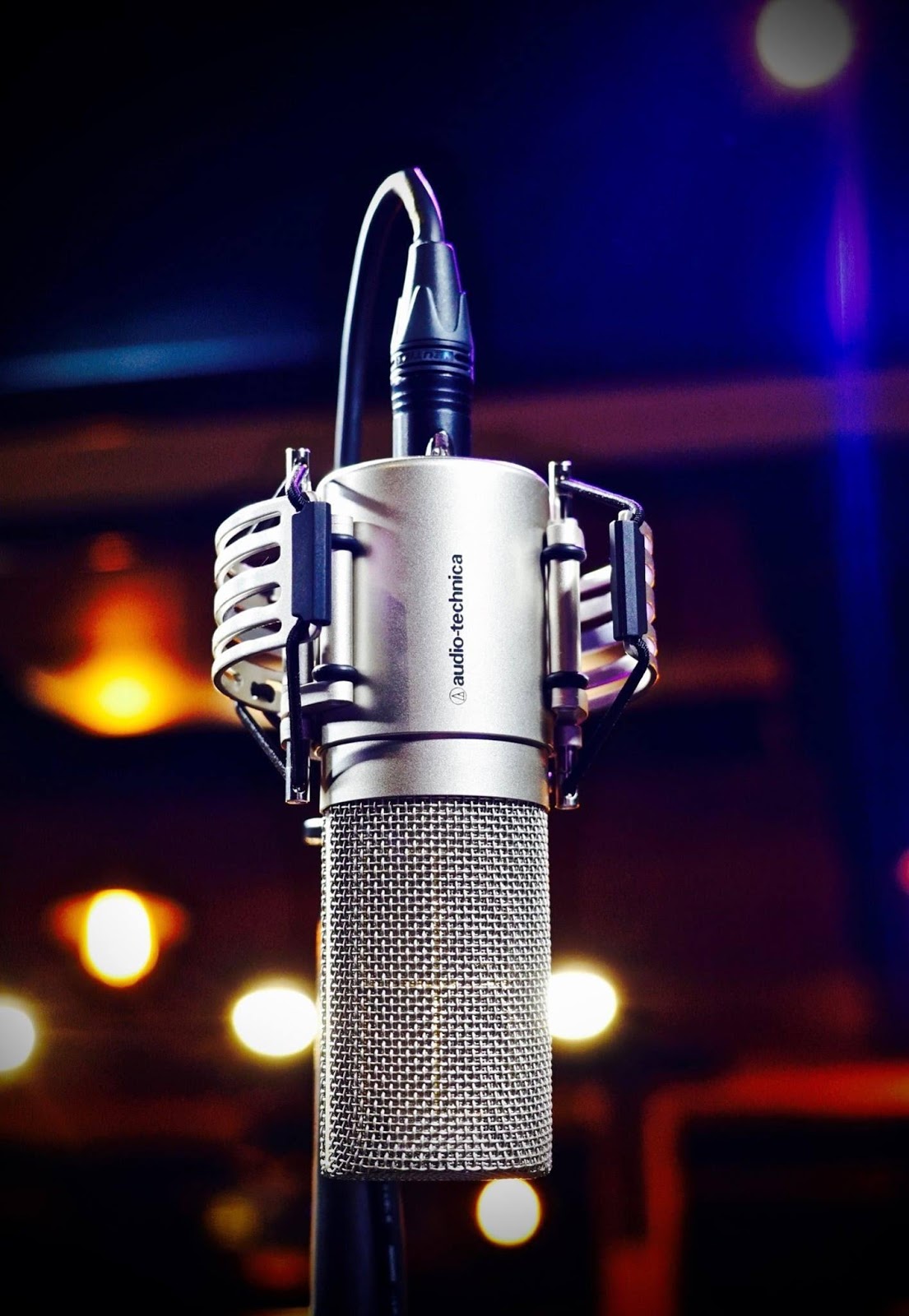
One of my acid tests for a condenser microphone is recording percussion, in particular, tambourine. Many condensers make a tambourine sound like my nephew is crunching a bag of potato chips. Not so with the AT5047. It’s one of the few condenser mics I’ve heard that gets tambourine right. Top end is jangly but not crunchy, almost as if someone took a high-quality ribbon mic and opened up the high-frequency response a bit. The AT5047 was crisp on a shaker, and you could clearly hear the change in timbre when the body of the shaker was rotated in front of the microphone.
Related: Audio-Technica Holds Successful AT5047 Launch Event at Westlake Pro, Mix, Aug. 16, 2017
To check the AT5047’s interaction with input impedance, I connected it to an Avalon AD2022 mic preamp, which provides four different impedance settings. Output level from the AT5047 dropped as the AD2022’s impedance setting was switched lower (no surprise), but the timbre was consistent across all settings except the 50Ω setting, where the low end thinned a bit, and I could hear the AD2022’s transformer start to saturate on loud passages. This tells you that the AT5047 should be very happy with a variety of mic preamps.
Given the pedigree of Audio-Technica’s 50 Series, it comes as no surprise that the AT5047 is a serious studio tool for instruments and vocals. No microphone sounds great on everything, through every mic preamp, but the AT5047 sounds excellent on a wide variety of instruments when used with a wide range of preamps. Did I mention that it was gorgeous on acoustic guitar? It’s as beautiful aesthetically as it is sonically, and if you’re shopping in the price range, you’d be foolish not to check it out.
Steve La Cerra is a New York-based recording and live sound engineer.
Product Summary
Company: Audio-Technica U.S.
Product: AT5047
Website: www.audio-technica.com
Price: $3,499
Pros: Beautiful design. Extremely low noise floor, consistent operation through a wide variety of preamps and impedance loads.
Cons: Somewhat narrow sweet spot, no pad or HPF. Quality like this doesn’t come cheap.
